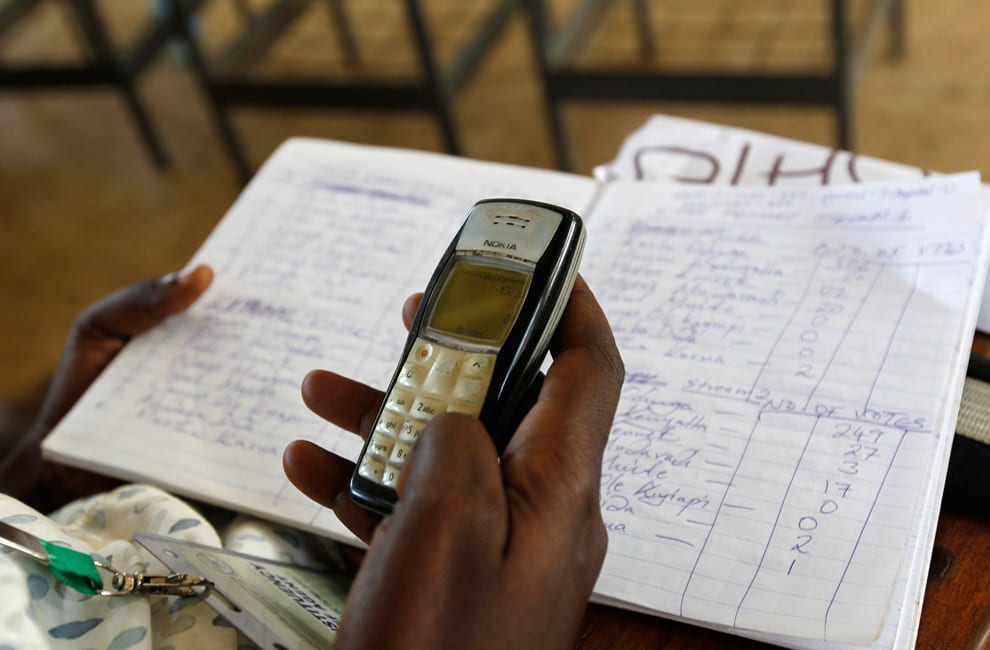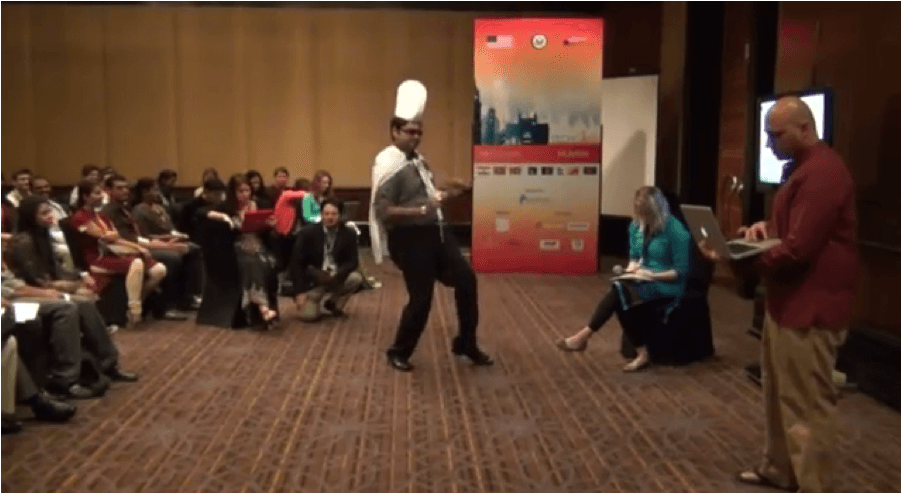Searching online for details about the life of Dr. Marie Gadsden, a ground-breaking African- American internationalist who was my husband’s dear friend and mentor, we discovered intriguing threads linking her to a complex and deeply fascinating story: the story of African-American political and cultural engagement with newly independent Africa in the late 1950’s and early 1960’s.
American internationalist who was my husband’s dear friend and mentor, we discovered intriguing threads linking her to a complex and deeply fascinating story: the story of African-American political and cultural engagement with newly independent Africa in the late 1950’s and early 1960’s.
It is also a story, I would argue, about two-way, collaborative, non-assymetrical dialogue — with and without government support — of the kind that today is the elusive prescription for successful public diplomacy as described by scholars such as Jan Melisson, Rhonda Zaharna, Kathy Fitzpatrick, and others. (If you have another view on this, Take Five welcomes your contributions and insights.)
To return to the story: Marie Gadsden was one of the first African-Americans awarded a Fulbright fellowship, which in 1953 took her to Oxford University in the UK. There, chance put her with roommate Sarah Ntiro, a future icon of Ugandan women’s rights, a pairing that added impetus to Marie’s growing interest in strengthening U.S.- African ties.
 1959 found Dr. Gadsden teaching English to government cabinet members and to English teachers in newly-independent Guinea, as a response to President Sékou Touré’s first request of the first U.S. Ambassador to that country. In 1960, Dorothy Height, who was president of the influential National Council of Negro Women and who would go on to be awarded the Presidential Medal of Freedom and the Congressional Gold Medal for her work in the Civil Rights movement, recalled joining in a women’s labor march with Marie Gadsden in the Guinean capital of Conakry.
1959 found Dr. Gadsden teaching English to government cabinet members and to English teachers in newly-independent Guinea, as a response to President Sékou Touré’s first request of the first U.S. Ambassador to that country. In 1960, Dorothy Height, who was president of the influential National Council of Negro Women and who would go on to be awarded the Presidential Medal of Freedom and the Congressional Gold Medal for her work in the Civil Rights movement, recalled joining in a women’s labor march with Marie Gadsden in the Guinean capital of Conakry.
Dr. Gadsden would likely have known of future Supreme Court Justice Thurgood Marshall’s travel to Kenya and the UK, also in 1960. And a few years later, in 1966, Dr. Gadsden crossed paths with famed American poet Langston Hughes in Nairobi, most likely during his USIA-sponsored trip to Uganda and Ghana.
So what were these and many other African-American icons doing in Africa? The essential answer is that they were sharing ideas, and receiving them. Sharing expertise, and gaining inspiration.
They were seeking support from Africans for American civil rights – human rights — and working hard to mobilize American support for Africa’s political and economic development. Traveling for U.S. public diplomacy, and traveling as private citizens, and merging the two as true citizen diplomats.
And also pressing the State Department in Washington to include more African-Americans among the ranks of U.S. diplomats, and to focus more effectively on relations with emerging African nations.
We are by now familiar with the Jazz Ambassadors of that era, a much-lauded Cold War initiative of U.S. public diplomacy that projected American culture and society through jazz greats from Louis Armstrong to Dizzy Gillespie, Duke Ellington, and Dave Brubeck.
 But fewer likely focus on the deeply emotional and polarizing backdrop of the early U.S. Civil Rights era, which saw, for example, Louis Armstrong temporarily refusing to tour for the U.S. in protest at President Eisenhower’s early handling of the Little Rock, AK, desegregation crisis. Such tensions are the focus of historian Penny von Eschen’s absorbing book Satchmo Blows Up the World.
But fewer likely focus on the deeply emotional and polarizing backdrop of the early U.S. Civil Rights era, which saw, for example, Louis Armstrong temporarily refusing to tour for the U.S. in protest at President Eisenhower’s early handling of the Little Rock, AK, desegregation crisis. Such tensions are the focus of historian Penny von Eschen’s absorbing book Satchmo Blows Up the World.
So the heady era when a young America embraced post-WWII globalism (a zeitgeist intensified by visionary and inspiring initiatives of the Kennedy era such as the Peace Corps and rapid expansion of U.S. development assistance), was a stirring but also conflicted period for many African-Americans who saw the African quest for post-colonial independence as a mirror and metaphor for the horrifically daunting struggle for civil rights at home. In December 1960, Ebony magazine celebrated Africa’s emerging states as both the realization of a dream as well as a somewhat precarious, must-not-fail experiment that demanded the material and spiritual support of African-Americans as well as the official support of the United States.
Dr. Gadsden’s story, like those of many other African-American leaders whose threads were woven into it, brings that era to vivid life. The all-too-brief details that follow are offered as an introductory sample, a tantalizing glimpse, in the hope that you will follow our own footsteps in discovering the rich history of African-American and African public diplomacy in the early Civil Rights era.

Dorothy Height’s memoir Open Wide the Freedom Gates (2009), and especially her Chapter 14, “Citizen of the World,” highlights the immediate and compelling political relevance of Height’s own international experience and that of other Civil Rights leaders.
In 1960, Height traveled for several months in Sierra Leone, Ghana, Nigeria, and Guinea to study the training needs of women’s organizations. (It was on this trip that she met Marie Gadsden, then with the small and shrinking U.S. Embassy delegation in Conakry.) Meetings with grassroots women who had never before thought about their problems and goals in gender terms; being hosted by a new cabinet minister in Accra, and Nigeria’s new chief barrister in Lagos; gaining insights into the debilitating legacy of colonialism — all are vividly described.
On her return, Height helped form a senior policy advocacy group, the American Negro Leadership Conference on Africa (ANLCA), together with Dr. Martin Luther King, Jr., Roy Wilkins, and other top Civil Rights leaders. A remarkable coalition of African-American religious, civil rights, fraternal, sorority, business, professional, educational, labor and social organizations supported ANLCA, including the American Committee on Africa, the Phelps-Stokes Fund, and even organizations whose primary commitment was clearly to grassroots Civil Rights organizing in the U.S. such as the Student Non-Violent Coordinating Committee.
Height recalls that Chief Simeon Olaosebikan Adebo, newly arrived in New York as Nigeria’s ambassador to the UN, invited ANLCA leaders “to discuss how Africans felt about U.S. policy. …He wanted black Americans to think more precisely about how the U.S. was relating [not just to South Africa but] to other parts of the continent too. He urged us to be aware of policies that affected the utilization of raw materials throughout southern and central Africa… Above all, he wanted us to know how U.S. policy played into these complicated issues.”
 Meanwhile, American poet Langston Hughes had spent much of the 1950’s putting together a highly ambitious anthology of African and diaspora writing, published in 1960 as An African Treasury. Daniel Won-gu Kim, in his excellent, insightful piece, We, Too, Rise with You: Recovering Langston Hughes’s African (Re)Turn 1954-1960 in An African Treasury, the Chicago Defender, and Black Orpheus (2007), describes how Hughes began the project in 1954, correponding with hundreds of writers and sifting and weighing thousands of potential contributions, many of them handwritten and “accompanied by letters … expressing their gratitude and admiration of Hughes as an elder black writer. “
Meanwhile, American poet Langston Hughes had spent much of the 1950’s putting together a highly ambitious anthology of African and diaspora writing, published in 1960 as An African Treasury. Daniel Won-gu Kim, in his excellent, insightful piece, We, Too, Rise with You: Recovering Langston Hughes’s African (Re)Turn 1954-1960 in An African Treasury, the Chicago Defender, and Black Orpheus (2007), describes how Hughes began the project in 1954, correponding with hundreds of writers and sifting and weighing thousands of potential contributions, many of them handwritten and “accompanied by letters … expressing their gratitude and admiration of Hughes as an elder black writer. “
Notes Kim, “the friendship and comradeship of this new generation of African writers could not have had a more meaningful influence on [Hughes]. … The anthology served as a kind of crash course, bringing him up to speed in the dizzying but inspiring pace of change in his ancestral homeland, feeding his own drive to rediscover–via African liberation–his role as a cultural fighter for the liberation of his people in the U.S.”
In 1962, on the heels of the anthology’s publication, Hughes made two trips to Africa sponsored by the U.S. Information Agency (USIA) — his first since he was an impressionable young man working on a tramp steamer in the 1920’s. In June-July of ’62, Langston Hughes’ itinerary included a major conference of writers at Makerere University College in Kampala, Uganda, and the dedication of a new United States Information Service (USIS) Center and Library in Ghana.
The “M’bari Writers Conference” opened in Kampala with about 45 writers, editors, scholars and  journalists from nine African countries, the U.S., UK, and Caribbean — including rising literary stars such as Chinua Achebe, future Nobel Prize winner Wole Soyinka, Ezekiel Mphahlele, Bloke Modisane, and Cyprian Ekwensi. Langston Hughes already knew and admired many of these writers from his work on the anthology, and had also engaged in correspondence with the brilliant South African writer Bessie Head and others. His speech at the new USIS library in Ghana clearly drew inspiration from his experience at the Kampala conference: “[As] America comes to Africa, as through these library shelves, to offer an exchange of knowledge … [so] Black Africa today is sending rejuvenating currents of liberty over all the earth reaching even as far as Little Rock, Birmingham and Jackson, Mississippi.”
journalists from nine African countries, the U.S., UK, and Caribbean — including rising literary stars such as Chinua Achebe, future Nobel Prize winner Wole Soyinka, Ezekiel Mphahlele, Bloke Modisane, and Cyprian Ekwensi. Langston Hughes already knew and admired many of these writers from his work on the anthology, and had also engaged in correspondence with the brilliant South African writer Bessie Head and others. His speech at the new USIS library in Ghana clearly drew inspiration from his experience at the Kampala conference: “[As] America comes to Africa, as through these library shelves, to offer an exchange of knowledge … [so] Black Africa today is sending rejuvenating currents of liberty over all the earth reaching even as far as Little Rock, Birmingham and Jackson, Mississippi.”
A modern awareness of this interweaving of literature, politics, culture, nationalism, and human rights echoes through “Langston Hughes in Paradise,” Amanda Leigh Lichtenstein’s beautiful and inspirational 2011 essay in Contrary. Lichtenstein, while teaching Langston Hughes’ poem “Mother to Son” (with its famous line “life for me ain’t been no crystal stair”) to students from the State University of Zanzibar, perceives this poem’s message of nationalism through the response it generates in her students.
Finally, there is the fascinating 1960 episode in which then-NAACP lawyer and future U.S. Supreme Court Justice Thurgood Marshall served as an advisor to Kenyan nationalists during negotiations on a new constitution for Kenya, at the time a British colony. The story, outlined in Mary Dudziak’s Working toward Democracy: Thurgood Marshall and the Constitution of Kenya, describes an invitation to Marshall from Tom Mboya, a young nationalist leader from Kenya (who was assassinated a few years later, in 1967.) Marshall traveled first to Kenya, and then to London, while his offers of assistance were debated by both Kenyans and British. Interestingly, Marshall’s most substantial contribution to the Kenyan constitution was to strengthen protection for property rights, de facto those of land-owning white Kenyans. Dudziak’s insights into the nuances and apparent contradictions of Thurgood Marshall’s work on, and later views on, the Kenyan constitution are well worth a read.
In February 1960, Marshall quickly wrapped up his involvement and returned to the U.S. earlier than anticipated “after four African-American freshmen at North Carolina Agricultural and Technical College held a sit-in at the segregated lunch counter at Woolworth’s in Greensboro, North Carolina. The simple protest soon expanded into a widespread sit-in movement,” and the NAACP Legal Defense Fund set out to defend the students immediately. “The sit-ins posed a set of legal and practical dilemmas for civil rights lawyers,” among them the problem — felt strongly by Marshall in particular, echoing his property-rights concerns about the Kenyan constitution — that the students had violated “facially valid trespass laws, not facially vulnerable segregation laws.”
Meanwhile, Thurgood Marshall maintained ties with his Kenya colleagues, and his work on the draft Kenyan Bill of Rights continued to be influential. Marshall developed a deep affection for Jomo Kenyatta after his release in 1961. He traveled to Kenya on a U.S. State Department sponsored trip in July 1963, and was an honored guest of Prime Minister Jomo Kenyatta at Kenya’s independence ceremonies in December 1963.
Marie Gadsden herself, after more than a decade with the Peace Corps, went on to become a pioneer in connecting America’s historically Black colleges and universities (HBCU’s) with international development training and exchange programs funded by USAID, USIA, and the State Department. Her work on this effort through the Phelps-Stokes Fund and later through NAFEO brought her a level of respect in Washington that led to her being named the first African-American board chair of Oxfam-America, among many other recognitions.
Throughout her life, she maintained a deep commitment to developing America and developing Africa, to engaging young Americans and young Africans in service, both at home and abroad. She seamlessly worked for the U.S. Government, for private organizations, and to advance her own deeply held personal vision.
Hers was a life of public diplomacy.

 The U.S. State Department has developed several programs, which have revolutionized traditional diplomacy; among them is TechCamp, which is a program within the Civil Society 2.0 initiative. Since 2010, there have been over 15 TechCamps held all over the world, from Santiago (Chile) to Sarajevo (Bosnia and Herzegovina), aimed at educating civil societies around the world providing them with stronger technology skills, which in turn will lead to more transparent governments and empowered citizens, ultimately strengthening democratic institutions.
The U.S. State Department has developed several programs, which have revolutionized traditional diplomacy; among them is TechCamp, which is a program within the Civil Society 2.0 initiative. Since 2010, there have been over 15 TechCamps held all over the world, from Santiago (Chile) to Sarajevo (Bosnia and Herzegovina), aimed at educating civil societies around the world providing them with stronger technology skills, which in turn will lead to more transparent governments and empowered citizens, ultimately strengthening democratic institutions.








